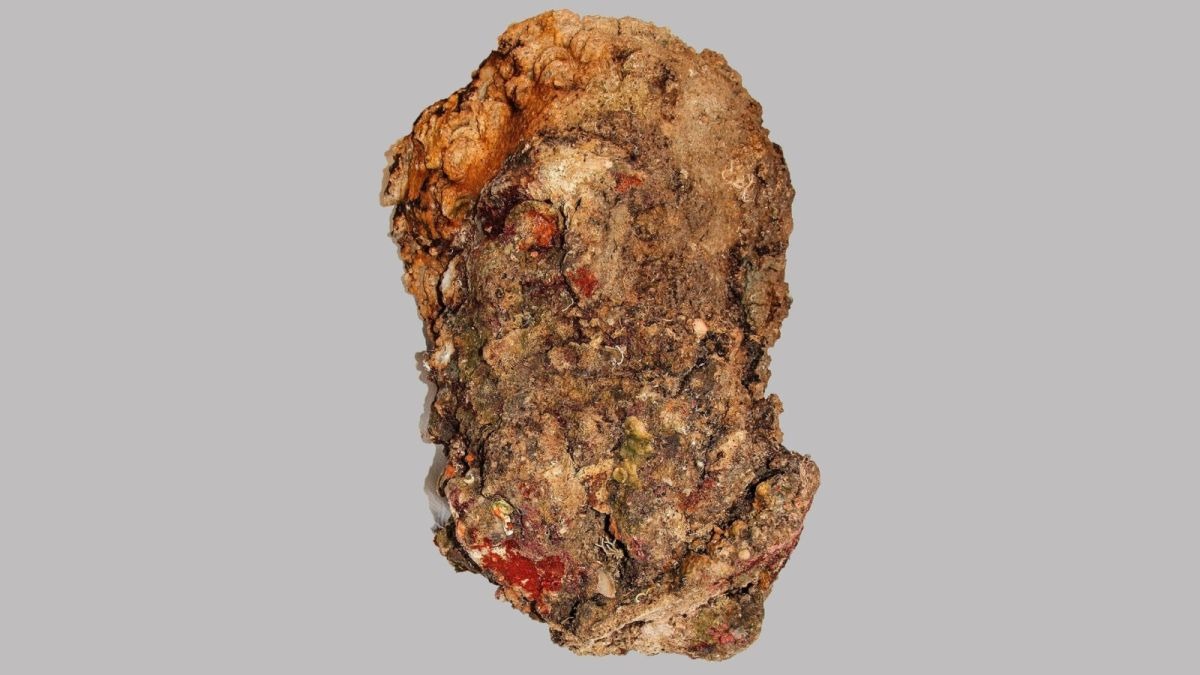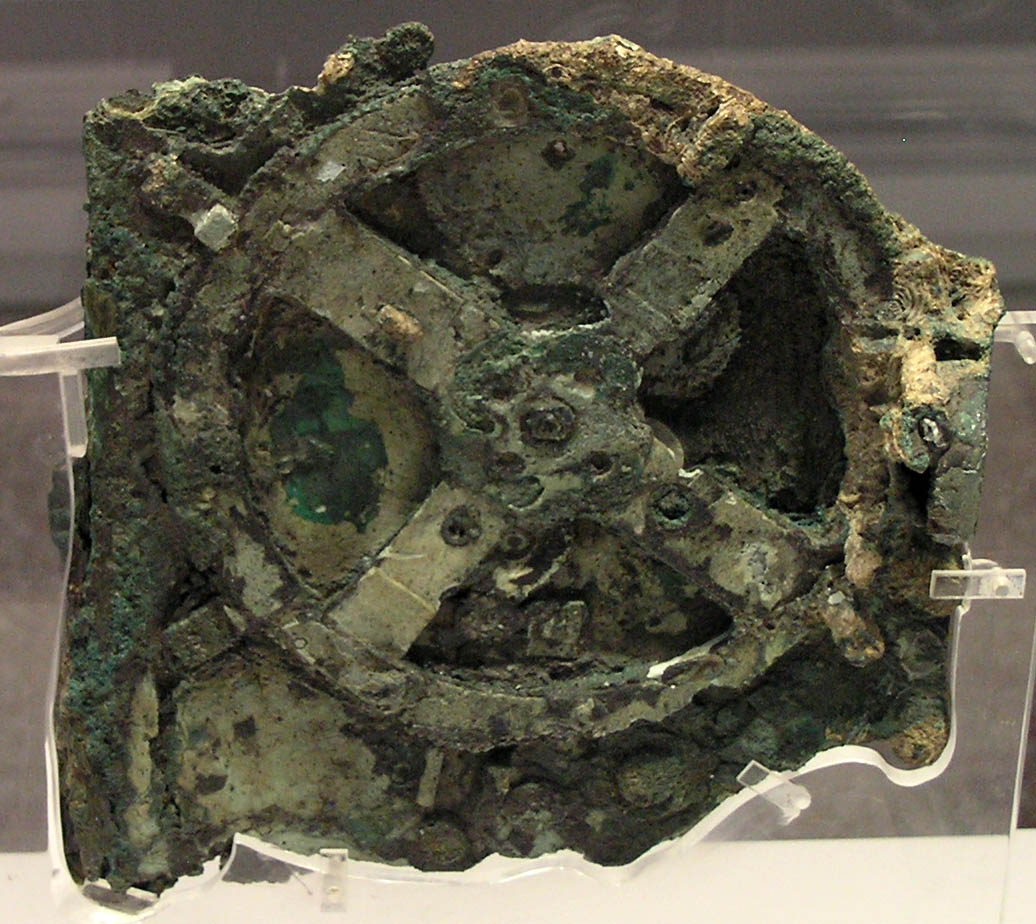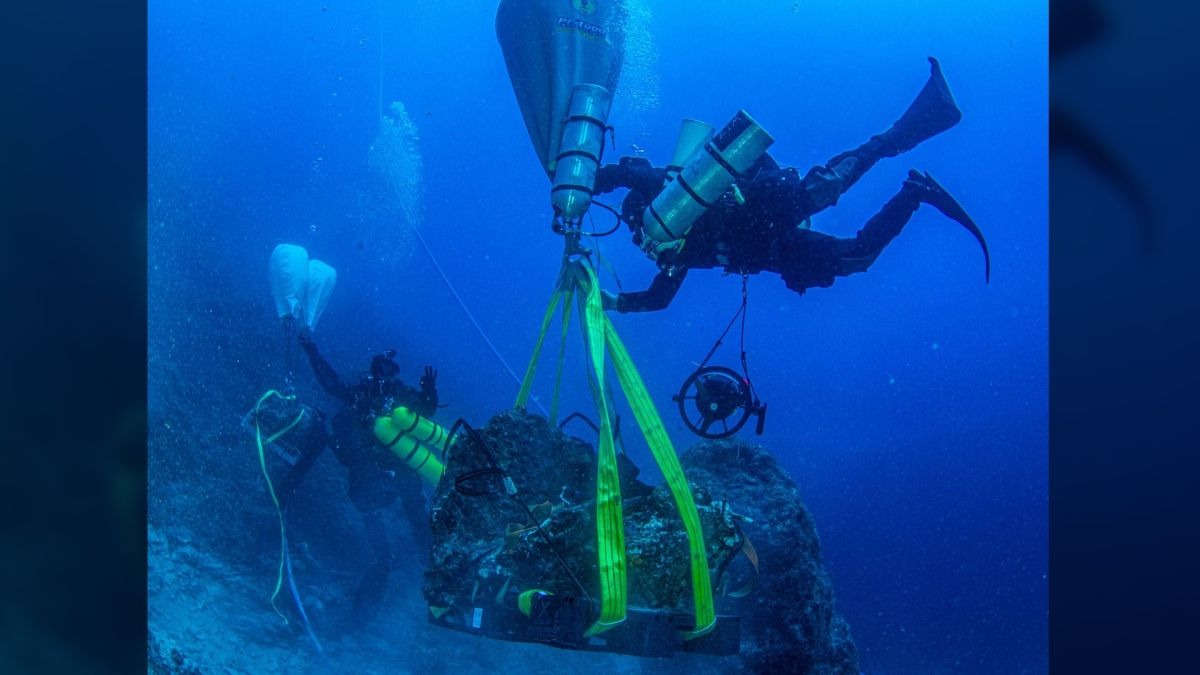
A Roman-era cargo ship that sank near the Greek island of Antikythera over two thousand years ago has been yielding abundant ancient treasures since its discovery in 1900. In late June 2022, researchers revealed their latest find — a marble head depicting the Greek and Roman demigod Hercules. The expedition team believes it belongs to a headless sculpture of Hercules found during the first visit to the shipwreck.
"In 1900, [sponge divers] pulled out the statue of Hercules, and now in all probability, we've found its head," explained lead researcher and archeologist Lorenz Baumer. "It's a most impressive marble piece. It is twice lifesize, has a big beard, a very particular face, and short hair. There is no doubt it is Hercules."

The ancient Roman vessel, which dates to approximately 60 BCE, when Greece was under the rule of the Roman Empire. Captain Dimitrios Kondos and his team led the first wave of excavations in 1900. The divers salvaged 36 marble statues, including renditions of mythological figures like Hermes, Apollo, and Hercules.
They also recovered several bronze statues. These artifacts are rare since most bronze sculptures from ancient Greece were melted to make coins and weapons. The most significant find, however, was the Antikythera Mechanism. Often referred to as the world's oldest computer, it calculated and displayed information about astronomical phenomena, such as eclipses, decades in advance.
The exploration project came to an abrupt halt in the summer of 1901 after a diver was killed and two others were paralyzed from decompression sickness. In 1976, Jacques-Yves Cousteau and his crew revisited the shipwreck and retrieved human skeletal remains and various other objects.

The latest discovery is part of the "Return to Antikythera" expedition launched in 2012. The marble head was found in the ship's unexplored hull area, previously covered by large boulders. The divers also found a marble base with the legs of another statue, parts of the ship's equipment, and two human teeth. The artifacts will be added to the already impressive collection on display at the National Archaeological Museum in Athens.
Resources: Livescience.com, antikythera.org.gr, arstechnica.com
